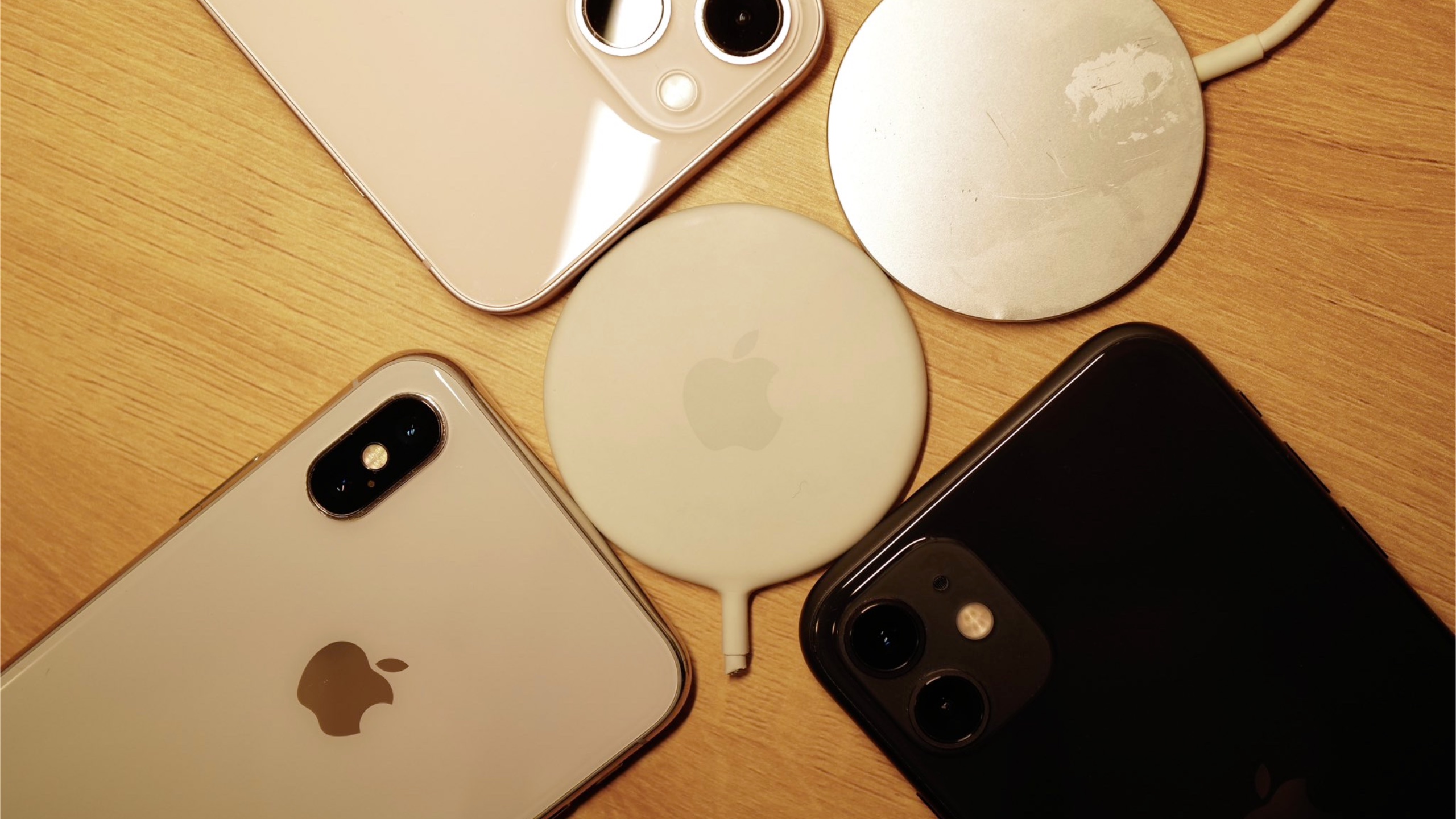These photos of a MagSafe prototype from Apple's ill-fated AirPower days show something very different from what it sells today
This isn't the MagSafe we know today.

When Apple finally added support for wireless charging with the iPhone X and iPhone 8, it also confirmed that it was working on AirPower. The wireless charging pad was supposed to be capable of wirelessly charging multiple devices at once, including an Apple Watch. That was in 2017 and things soon went quiet.
Fast forward to 2019 and the AirPower project was finally canceled after it was deemed to be too difficult to produce to Apple's specs. It wanted it to work by allowing people to place items down anywhere, and the whole thing was powered by similar chips that made iPhones work, so it was never going to be cheap. But then we got its replacement in MagSafe, a magnetic charger that shipped alongside the iPhone 12 in 2020.
But it turns out that the MagSafe that shipped is very different from the one that Apple had been working on. In fact, it had been designing the MagSafe charger alongside AirPower all along, and photos of the prototype from 2017 have now surfaced on X.
2017, the year of wireless charging
Images of the prototype MagSafe charger have been shared on X, the social network previously known as Twitter, by Apple collector @KosutamiSan. They say that the prototype was built around March 2017, noting that there are a few differences when places alongside the MagSafe wireless charger that you can walk into any Apple Store and buy today.
The most obvious difference seems to be that the prototype is thinner than the shipping model, with a change in magnet arrangement also pointed to by the prototype collector.
Interestingly, they also say that the bottom prototype shows design similarities to the bottom of the HomePod in that they both have the same material. It isn't clear why Apple chose not to use that material, but it's perhaps notable that the HomePod has been accused of leaving white rings on some kinds of woods, so it's probably for the best that Apple went in a different direction here.
Unreleased prototype of MagSafe Charger. It’s super rare yet interesting. Featured different design, magnetic placement, and materials used.Produced around Mar. 2017, which same the AirPower does. Project started over after it’s cancellation.Infos in last pic. #appleinternal pic.twitter.com/lxTQqhgk5sJanuary 10, 2024
Ultimately, Apple chose to go the route of the MagSafe Charger that can be found today and it's worked well. The advent of the Qi2 wireless charging standard means that MagSafe isn't quite as important to iPhone owners as it once was of course, so there will soon be more options than ever for people who want wireless charging at 15W without going the MagSafe route.
Master your iPhone in minutes
iMore offers spot-on advice and guidance from our team of experts, with decades of Apple device experience to lean on. Learn more with iMore!
As for AirPower, it's a shame that it didn't launch because the initial 2017 demonstration looked pretty great. But it seems that Apple over-promised on a product that it could never quite get right. There were regular rumors of AirPods units getting too hot during testing, something Apple couldn't get to grips with. And a company as risk-averse as Apple was never going to risk selling a wireless charger like that.
We should never say never, however. I'd be surprised if there wasn't still an AirPower or two in Apple Park and there is always the chance that the project could be revived. For now, though, all eyes will be on CES 2024 to see what Qi2 wireless chargers are announced. We've already seen new Satechi Qi2 wireless chargers, and Belkin has some of its own, too.
More from iMore

Oliver Haslam has written about Apple and the wider technology business for more than a decade with bylines on How-To Geek, PC Mag, iDownloadBlog, and many more. He has also been published in print for Macworld, including cover stories. At iMore, Oliver is involved in daily news coverage and, not being short of opinions, has been known to 'explain' those thoughts in more detail, too. Having grown up using PCs and spending far too much money on graphics card and flashy RAM, Oliver switched to the Mac with a G5 iMac and hasn't looked back. Since then he's seen the growth of the smartphone world, backed by iPhone, and new product categories come and go. Current expertise includes iOS, macOS, streaming services, and pretty much anything that has a battery or plugs into a wall. Oliver also covers mobile gaming for iMore, with Apple Arcade a particular focus. He's been gaming since the Atari 2600 days and still struggles to comprehend the fact he can play console quality titles on his pocket computer.
